The Notre Dame de Paris translates to “Our Lady of Paris” in French. It is one of the first few cathedrals to be built in the Gothic style. The main entrance to the church lies in the West. The Cathedral’s West facade is highly ornamented and is identified as the image of the Cathedral. It’s an internationally recognized building. It was in the news in 2019 because of a large fire under its roof that severely damaged the Cathedral. Although built in the 1100s, Notre Dame has seen additions, changes, eliminations, and repairs over almost the last century. It has seen tumultuous politics, architectural trends, etc, and has been a collage of various things added and removed at different times to become the Notre Dame de Paris as we know it today.
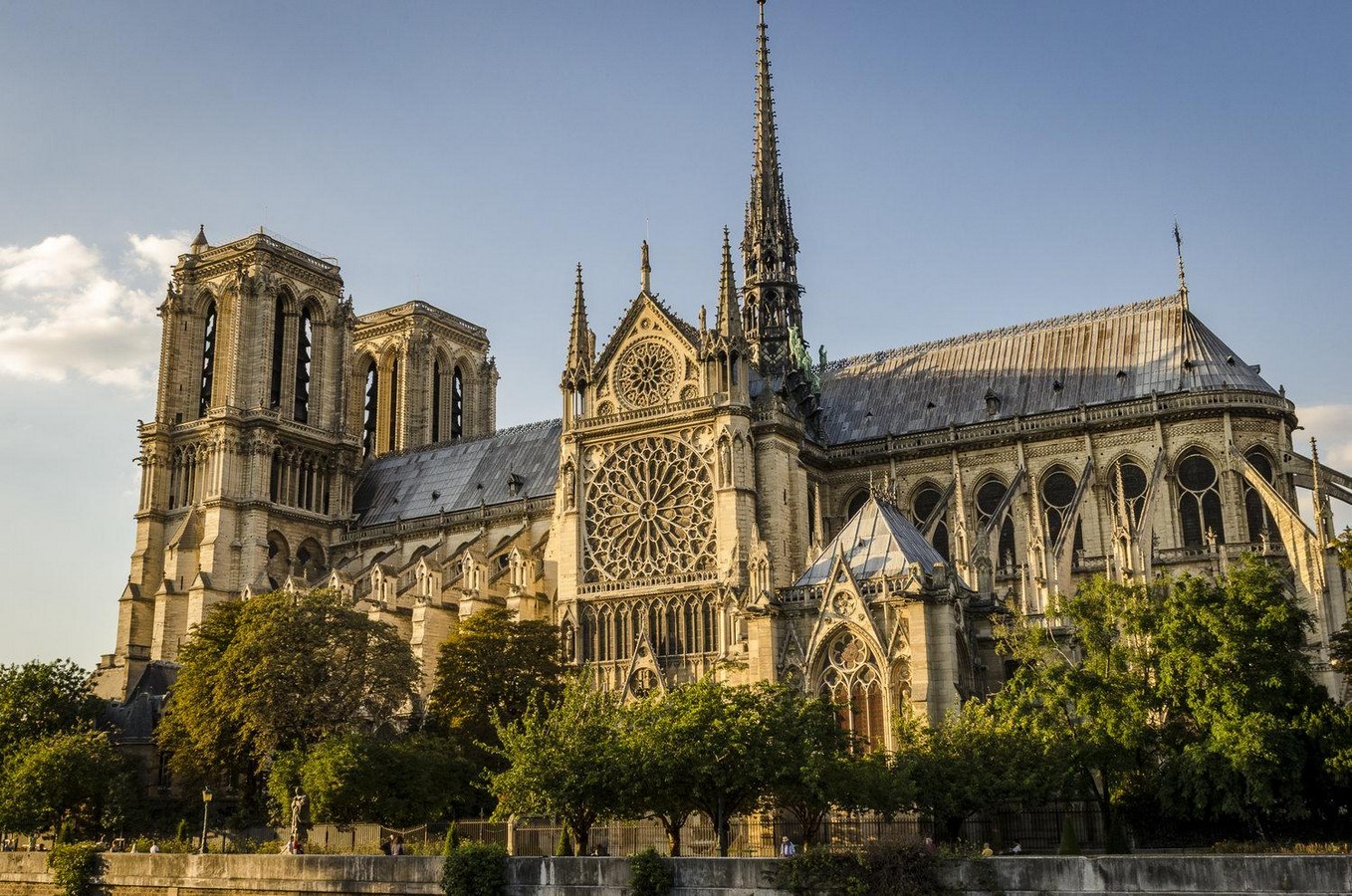
Fact 1: The Notre Dame is (probably) as Gothic as it Gets | Notre Dame de Paris
The Notre dame de Paris was one of the first buildings to ever be built in the gothic style. It was also one of the first few buildings to use flying buttresses. The cathedral was completed in 1345 (Murphy, Zraick,2019). Since the church was extremely tall, windows were added to lighten up the space. The punctures in the thin wall required that it have support. Thus, flying buttresses were added around the nave in the 12th century (Meier,2019). The gothic style of architecture was one of the first few movements in architecture that recognized structural members as separate from walls. The exposed buttresses later became an iconic characteristic of gothic design.
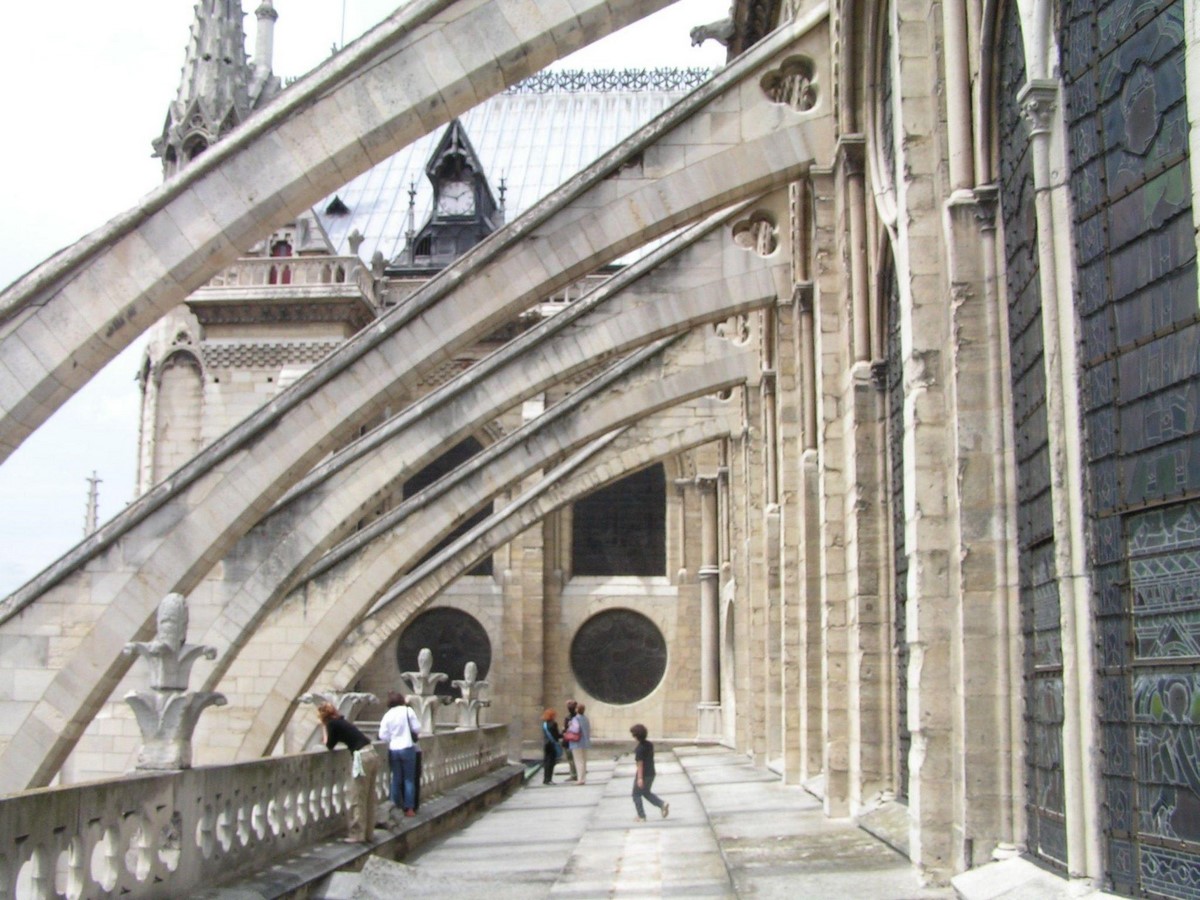
Fact 2: The Cathedral lies in a Pagan City
The Cathedral is built on a small island called Île-de-la-Cité. This island was once home to a Gallo-Roman city called Lutetia (Historie de Paris, n.d). Excavations suggest that the Cathedral might have been built right above the remnants of a pagan temple. During the 1700s, a sculpted altar of Jupiter, among those of other deities, was discovered in an excavation under the choir of the Notre Dame de Paris (Meier,2019). Additionally, architectural ruins dating back to the time of Lutetia were found beneath the square in front of the Notre Dame de Paris in excavations during the 1960s.
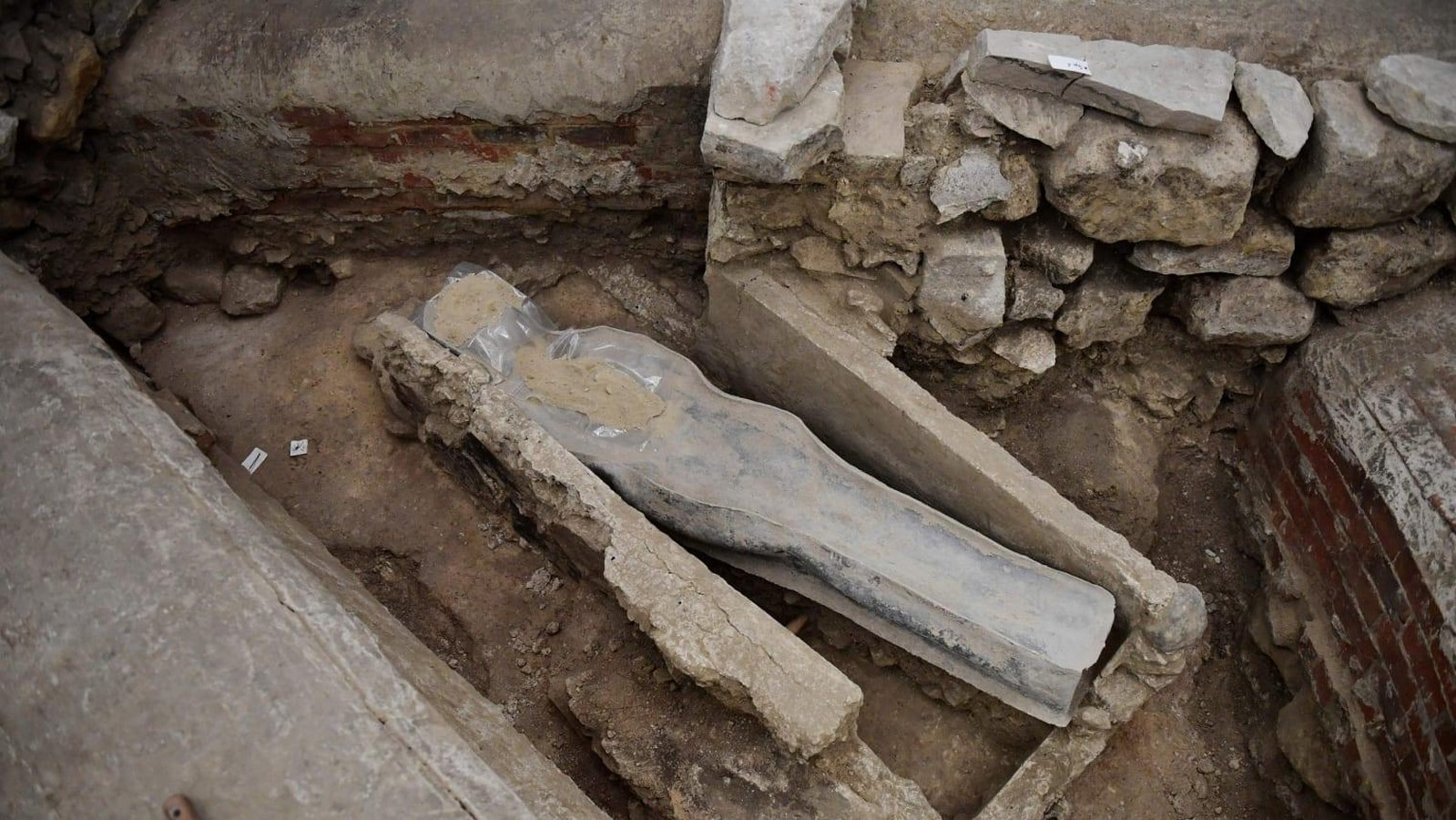
Fact 3: One > Two Cathedrals | Notre Dame de Paris
The Notre Dame de Paris was built on the ruins of two earlier churches. This idea was conceptualised by the bishop of Paris in 1160, Maurice de Sully. His idea was to convert the ruins of the two existing basilicas into one Cathedral of a larger scale (The Editors of Encylopedia Britannica, 2023). The foundation stone was laid by Pope Alexander III. The high altar was sanctified in 1189. Different parts of the church were added over time.
Fact 5- Same Same But Different
Prima Facie, Notre Dame’s two towers appear to be identical and symmetric. However, upon closer examination, one realises that the tower on the north is a little bigger than that on the south of the facade. Just like all the elements of the Cathedral, the towers, too, were built over time and reflect the almost collage-like juxtaposition of architecture, and politics that culminate in the present-day structure.
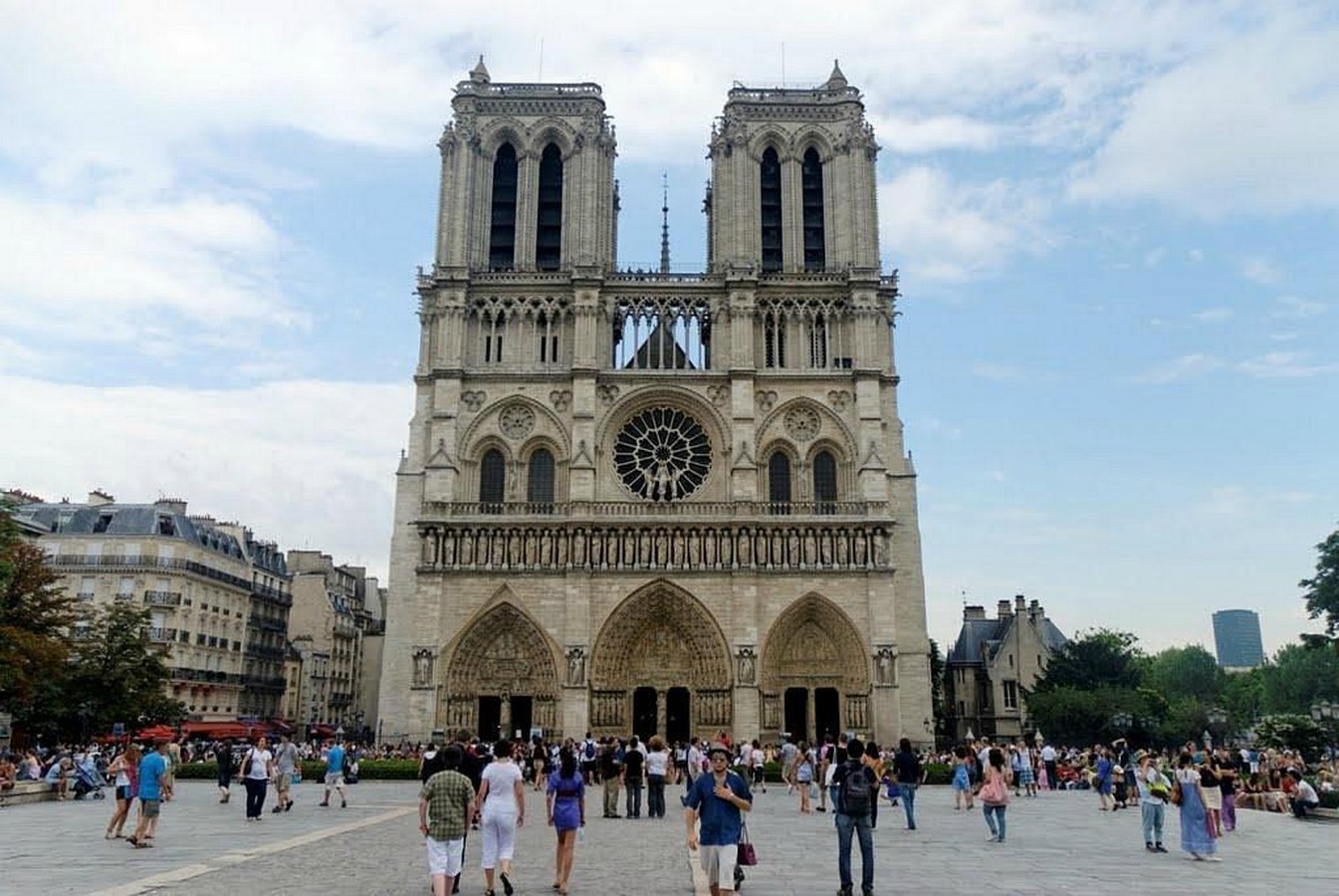
Fact 6- All Roads Lead to Notre Dame Paris | Notre Dame de Paris
Hidden by scores of tourists milling outside the Notre Dame lies a petite circular marker with an eight-pointed bronze star, embedded in the cobblestones. The words ‘Point zero des routes de Paris’ is engraved on this metal plate. This is the point from which all distances to Paris from other cities are measured. It was installed in 1924. It was temporarily shifted for underground parking construction in the 1960s. However, the archeological site mentioned above was discovered and these plans were thwarted.
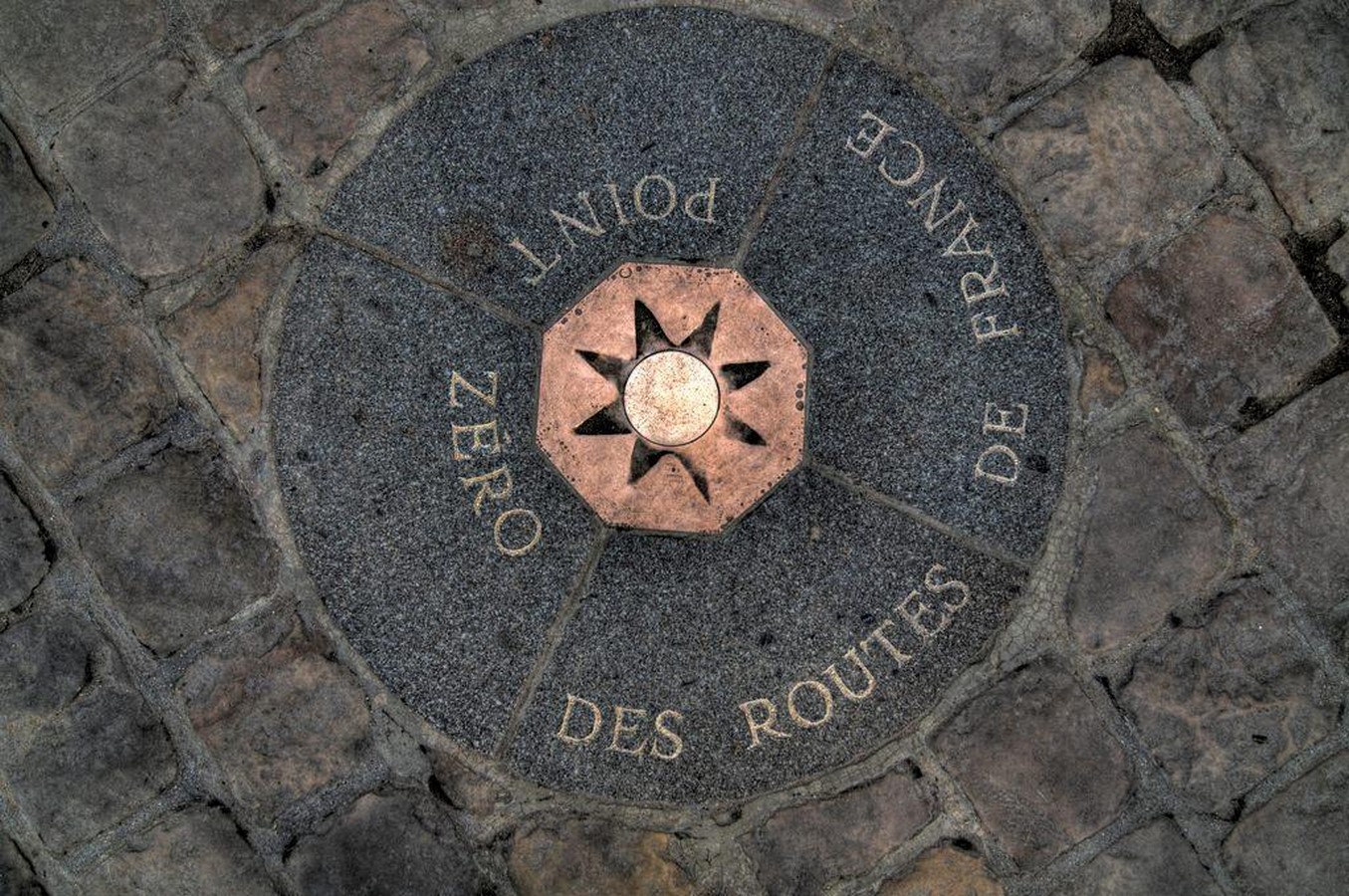
Fact 7- The Cathedral was A Place of Beheading
Owing to its sacredness, no real beheadings have taken place here. However, during the French Revolution of 1789, the citizens were so disgusted by the monarchy that they began to take down every symbol of royalty on the streets of Paris. Revolutionaries took down statues along the front facade of Notre Dame, mistaking them to be statues of kings. They beheaded these statues in the spirit of rebellion. However, these statues were representations of the Kings of Judah. Although the statues continue to be headless, 21 of them have been found and lie in the Musee du Moyen-Age de Cluny in France.
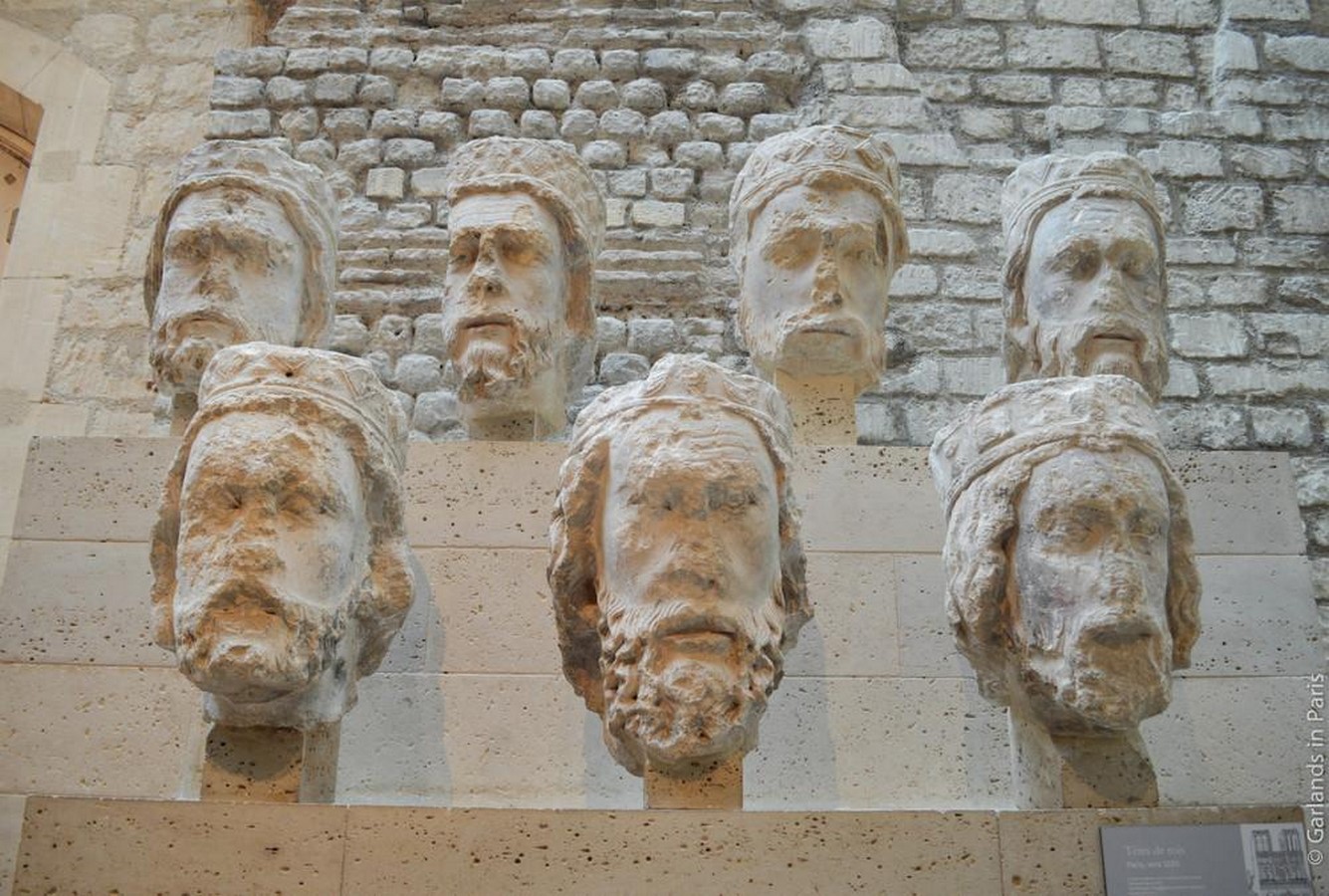
Fact 8: Napoleon Bonaparte to the Rescue | Notre Dame de Paris
By the 1800s, the Notre Dame de Paris had seen the vandalism of the French revolution, politics, and testing times. The building was in bad shape and was on the verge of demolition. For years, it had been used almost as a warehouse. When Napoleon Bonaparte declared his coronation as emperor to be hosted at Notre Dame in 1804, the church returned to use to host this grand ceremony and the Notre dame saw a new prominence it enjoys to date.
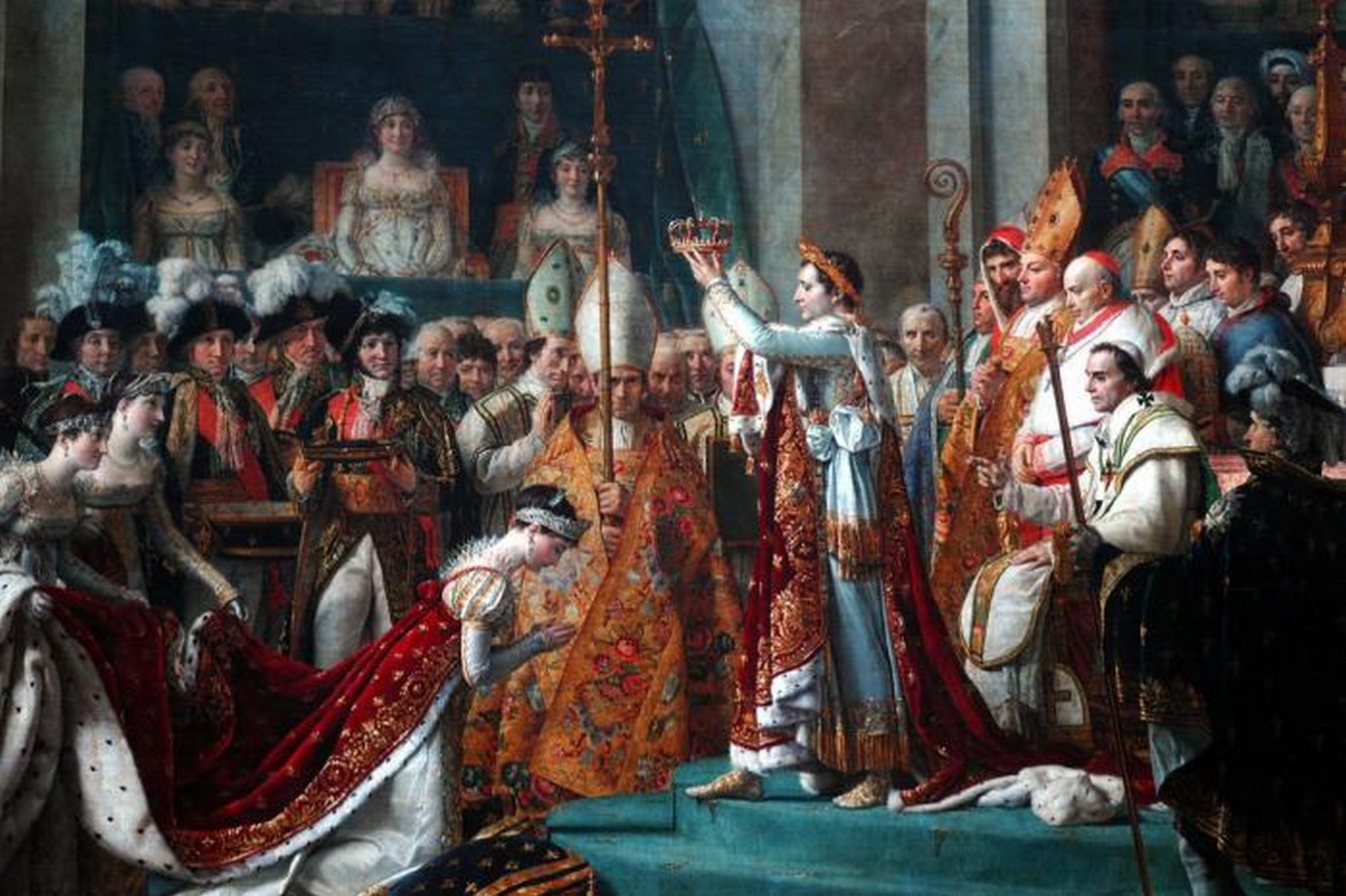
Bibliography
Murphy, H. and Zraick, K. (2019) ‘Notre-Dame Cathedral: Facts and a Brief History – The New York Times’, The New York Times, 15 April. Available at: https://www.nytimes.com/2019/04/15/world/europe/notre-dame-cathedral-facts.html
(Accessed: 16 January 2023).
Meier, A. (2019) 13 Facts About Notre-Dame Cathedral | Mental Floss, Mental Floss.om. Available at: https://www.mentalfloss.com/article/556629/facts-about-notre-dame-cathedral (Accessed: 14 January 2023).
Crypt | Crypte archéologique de l’île de la Cité – Musée Carnavalet – Histoire de la ville de Paris | Paris.fr (no date) Historie de Paris. Available at: https://www.crypte.paris.fr/en/crypt (Accessed: 16 January 2023).
The Editors of Encyclopedia Britannica (2023) ‘Notre-Dame de Paris | History, Style, Fire, & Facts | Britannica’, Encyclopedia Britannica. Available at: https://www.britannica.com/topic/Notre-Dame-de-Paris (Accessed: 16 January 2023).


















